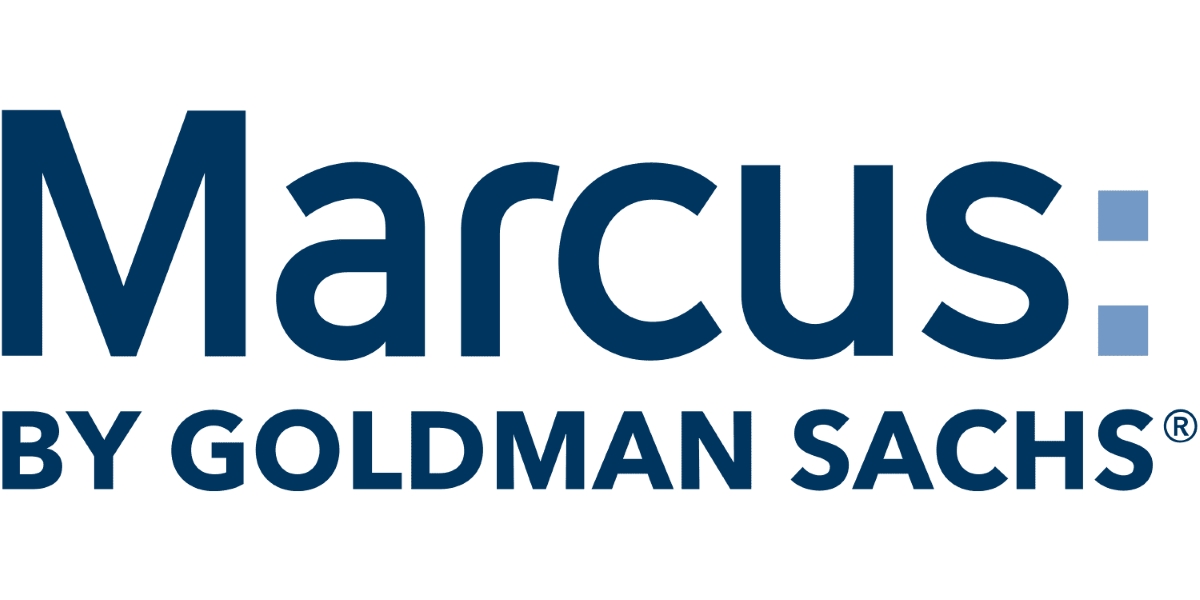

Finance
How To Ask For A Credit Increase Chase
Published: January 9, 2024
Learn how to ask for a credit increase with Chase and take control of your finances. Boost your credit limit for greater financial flexibility.
(Many of the links in this article redirect to a specific reviewed product. Your purchase of these products through affiliate links helps to generate commission for LiveWell, at no extra cost. Learn more)
Table of Contents
Introduction
When it comes to managing your finances, one key factor that can significantly impact your credit score and overall financial well-being is your credit limit. A credit limit is the maximum amount of money that a lender, such as a credit card issuer, is willing to extend to you. It determines how much you can borrow or spend on your credit card.
If you find yourself needing more purchasing power or wanting to improve your credit utilization ratio, you may consider requesting a credit increase. Chase, one of the leading credit card issuers, offers its cardholders the option to request a higher credit limit.
In this article, we will guide you through the process of requesting a credit increase from Chase. We will discuss the factors to consider before making your request, the steps involved, and provide some tips for a successful outcome.
Remember, obtaining a higher credit limit is not guaranteed, as it depends on various factors, including your creditworthiness and financial situation. However, understanding the process and following the right steps can increase your chances of securing a credit increase.
So, if you’re ready to learn how to ask for a credit increase from Chase and potentially expand your financial resources, let’s dive in!
Understanding Credit Limits
Before diving into the process of requesting a credit increase from Chase, it’s important to have a solid understanding of what credit limits are and how they impact your finances.
A credit limit is the maximum amount of credit that a lender, such as a credit card issuer, is willing to extend to you. It represents the upper limit on your borrowing or spending power on your credit card. Your credit limit is determined by the lender based on a variety of factors, including your credit score, credit history, income, and debt-to-income ratio.
Having a higher credit limit can offer several benefits. It provides you with more financial flexibility by allowing you to make larger purchases or carry higher balances. It can also help improve your credit utilization ratio, which is the percentage of your available credit that you’re using. Maintaining a lower credit utilization ratio is generally seen as positive by lenders and can boost your credit score.
On the other hand, it’s essential to use your increased credit limit responsibly. It can be tempting to overspend or accumulate high balances, which may negatively impact your credit score and financial health if not managed properly.
It’s also important to note that credit limits can be flexible and can change over time. Lenders periodically review your account and may increase or decrease your credit limit based on various factors, such as your creditworthiness, payment history, and overall financial situation.
Understanding how credit limits work and their impact on your financial well-being is crucial before considering a credit increase. This knowledge will enable you to make informed decisions and take appropriate actions to manage your credit responsibly.
Factors to Consider Before Requesting a Credit Increase
Before you submit a request for a credit increase from Chase, it’s important to take several factors into consideration. These factors can help you determine whether you’re in a good position to request a higher credit limit and whether it aligns with your financial goals. Here are some key factors to consider:
- Creditworthiness: Lenders consider your creditworthiness when deciding whether to grant a credit increase. They look at factors such as your credit score, payment history, and credit utilization ratio. If you have a solid credit history and have been managing your existing credit responsibly, you may have a higher chance of getting approved for a credit increase.
- Income and Debt-to-Income Ratio: Lenders also consider your income and debt-to-income ratio when determining your creditworthiness. If you have a higher income and a low debt-to-income ratio, it may indicate to lenders that you can handle a higher credit limit. However, it’s important to ensure that you can comfortably manage any additional credit without getting overwhelmed by debt.
- Purpose of the Credit Increase: Consider why you need a higher credit limit. Are you looking for more purchasing power or aiming to improve your credit utilization ratio? Understanding your motivations can help you determine if a credit increase is the right step for you.
- Financial Stability: Evaluate your overall financial stability. Think about your current financial obligations, any upcoming major expenses, and your ability to manage additional credit responsibly. It’s important to ensure that you have a stable financial foundation before requesting a credit increase.
- Payment History: Lenders typically prefer customers with a strong payment history. If you have a history of late payments or have recently missed payments, it may be wise to focus on improving your payment record before requesting a credit increase.
Taking these factors into account will help you determine if now is the right time to request a credit increase. It’s important to assess your financial situation and ensure that you’re prepared to handle additional credit responsibly.
Steps to Request a Credit Increase from Chase
Requesting a credit increase from Chase is a straightforward process. Follow these steps to submit your request:
- Check Your Eligibility: Before proceeding, ensure that you meet the eligibility criteria for a credit increase with Chase. Typically, you should have a good credit history with timely payments and an established relationship with Chase, preferably for at least six months. It’s also important to have a stable income and a low debt-to-income ratio.
- Log in to Your Chase Account: Visit the Chase website and log in to your online account. If you don’t have an online account, you can easily create one by following the prompts on the website.
- Access the Credit Increase Request Form: Once logged in, navigate to your account dashboard. Look for options related to credit limit management, and locate the credit increase request form or link. Chase may have different names for this form, such as “Credit Line Increase Request” or “Credit Limit Increase.” Click on the appropriate option to access the request form.
- Provide Required Information: Fill out the credit increase request form with accurate and up-to-date information. You may be asked to provide details such as your current income, employment information, and any additional financial information Chase needs to evaluate your request.
- Submit Your Request: Once you have completed the form, carefully review the information you provided for accuracy. Double-check all the details to avoid any errors or discrepancies. Once you are satisfied with the information entered, submit the request form.
- Wait for a Decision: After submitting your request, Chase will review your application. The review process can take some time, so be prepared for a waiting period. Chase may contact you for additional information or clarification if needed.
- Be Patient: If your request is approved, you will receive a notification from Chase confirming the credit increase. The increased credit limit will be reflected in your account. If your request is declined, Chase will provide an explanation for the decision.
Remember that obtaining a credit increase is not guaranteed, as it depends on various factors. It’s essential to maintain good credit behavior and regularly review your account to stay informed about any changes or opportunities for credit limit adjustments.
Tips for a Successful Credit Increase Request
Submitting a successful credit increase request requires careful consideration and preparation. To maximize your chances of approval, consider these tips:
- Maintain a Good Payment History: Lenders, including Chase, value customers with a solid payment history. Make all of your payments on time and avoid any late or missed payments. Demonstrating responsible credit behavior can increase your credibility and improve your chances of getting a credit increase.
- Keep Your Credit Utilization Low: Aim to keep your credit utilization ratio low, which means using only a small percentage of your available credit. It’s recommended to utilize 30% or less of your credit limit. Keeping your balances low showcases responsible credit management and may increase your chances of a credit increase approval.
- Pay Down Existing Debt: If you have outstanding balances on your credit cards or loans, consider paying them down before requesting a credit increase. A lower debt-to-income ratio signals to lenders that you can handle additional credit responsibly.
- Update Your Income Information: Ensure that your income information on file with Chase is accurate and up-to-date. If you have experienced a significant increase in income, be sure to include that information in your credit increase request. A higher income may boost your chances of approval.
- Be Realistic: Request a credit increase that aligns with your needs and financial capabilities. Be realistic about the amount you are requesting and consider factors such as your income and ability to manage additional credit. Requesting an unreasonable increase may raise red flags or result in a declined request.
- Stay Active and Engaged: Regularly use your Chase credit card and make payments on time to demonstrate your active engagement with the card. This shows that you are a responsible borrower and may work in your favor when requesting a credit increase.
- Contact Customer Service for Assistance: If you have any questions or concerns about the credit increase request process or your eligibility, don’t hesitate to contact Chase customer service. They can provide guidance and address any inquiries you may have.
Following these tips can improve your chances of a successful credit increase request. Remember to take into account your unique financial situation and adapt these tips to suit your needs. Keep in mind that approval is not guaranteed, but by taking proactive steps, you can increase the likelihood of receiving a positive outcome.
Potential Outcomes and Next Steps
After submitting your credit increase request to Chase, it’s important to understand the potential outcomes and be prepared for the next steps. Here are the possible scenarios and what you can do next:
- Approved for a Credit Increase: If your request for a credit increase is approved, congratulations! You will receive a notification from Chase confirming the approved increase. The higher credit limit will be reflected in your account, giving you more purchasing power. Make sure to manage your increased credit responsibly and avoid accumulating unnecessary debt.
- Partial Credit Increase: In some cases, Chase may offer a partial credit increase instead of granting the full amount you requested. If this happens, don’t be discouraged. A partial credit increase still provides you with additional buying power. If you need further increases in the future, you can consider requesting another credit increase after some time has passed.
- Request Denied: There is a possibility that your credit increase request may be denied by Chase. If this happens, don’t panic. Take a moment to review the explanation provided by Chase for the denial. It could be due to factors such as insufficient income, a high debt-to-income ratio, or recent negative changes to your credit profile. Use this as an opportunity to improve your creditworthiness by addressing any underlying issues and working towards building a stronger credit history.
- Reapplying in the Future: If your credit increase request is denied, don’t immediately reapply. Take some time to address any concerns or issues that may have contributed to the denial. Improve your credit behavior, pay down debt, and continue to make timely payments. After a reasonable amount of time has passed, you can consider reapplying for a credit increase with Chase.
- Alternative Options: If your credit increase request is denied, or you’re unable to secure the desired increase, consider exploring alternative options. This could include applying for a new credit card with a higher credit limit or considering a different financial institution that may be more willing to accommodate your request. Just remember to weigh the pros and cons before pursuing other options.
- Monitor Your Credit: Regardless of the outcome, it’s important to regularly monitor your credit. Keep an eye on your credit reports, credit scores, and any changes to your credit profile. Staying informed can help you make better financial decisions and improve your creditworthiness over time.
Remember that building and maintaining good credit takes time and effort. Even if your credit increase request is denied, remain focused on smart credit management and work towards improving your financial standing. With dedication and responsible financial habits, you can increase your chances of success in future credit increase requests.
Conclusion
Requesting a credit increase from Chase can be a useful strategy to gain more purchasing power and improve your credit utilization ratio. However, it’s essential to approach the process with careful consideration and an understanding of the factors involved.
In this article, we discussed the importance of understanding credit limits and their impact on your financial health. We also explored the factors to consider before requesting a credit increase, such as creditworthiness, income, and debt-to-income ratio. These factors help determine your eligibility and ensure that you’re ready to handle additional credit responsibly.
We also provided a step-by-step guide on how to request a credit increase from Chase. By following the outlined steps, you can submit your request online and increase your chance of a positive outcome.
Furthermore, we shared valuable tips for a successful credit increase request, including maintaining a good payment history, keeping your credit utilization low, and updating your income information. These tips can significantly improve your chances of approval.
Lastly, we discussed the potential outcomes of your credit increase request and the next steps to take, whether your request is approved, denied, or partially approved. It’s crucial to be prepared for different scenarios and understand that credit building is an ongoing journey that requires patience and responsible financial habits.
Remember, obtaining a higher credit limit is not just about having more spending power; it’s about using credit responsibly and improving your overall financial health. As you navigate the process, always prioritize responsible credit management and regularly monitor your credit profile.
By following these guidelines and maintaining good financial habits, you can increase your chances of a successful credit increase request and continue on the path to financial success.














